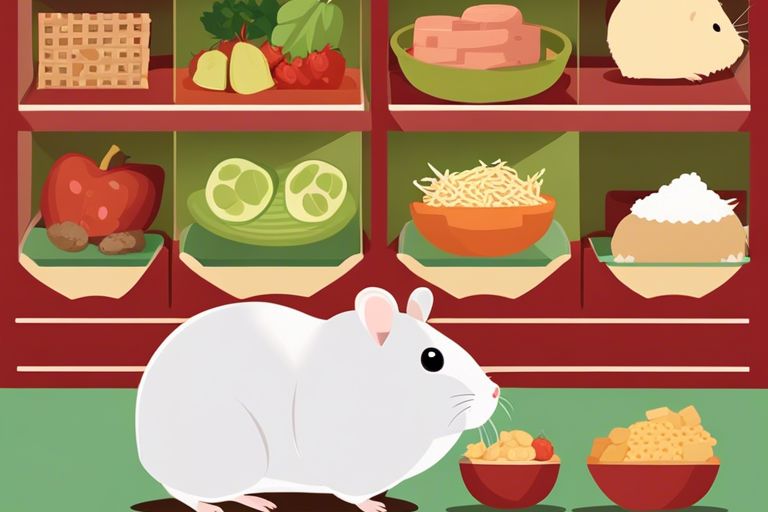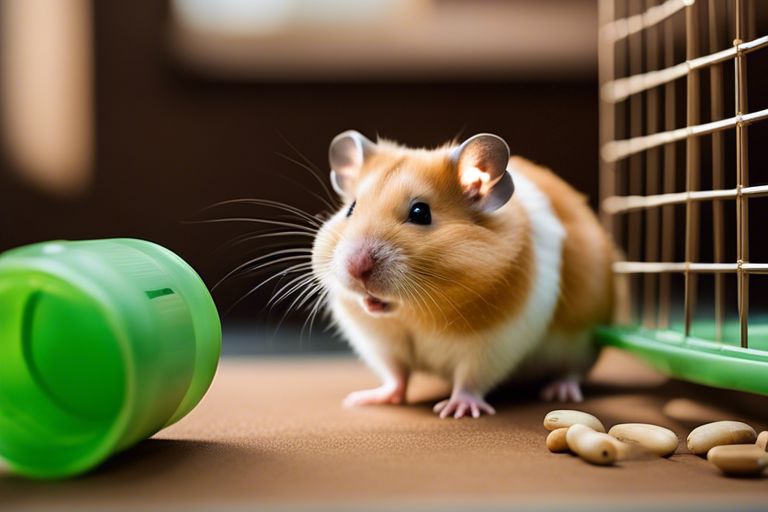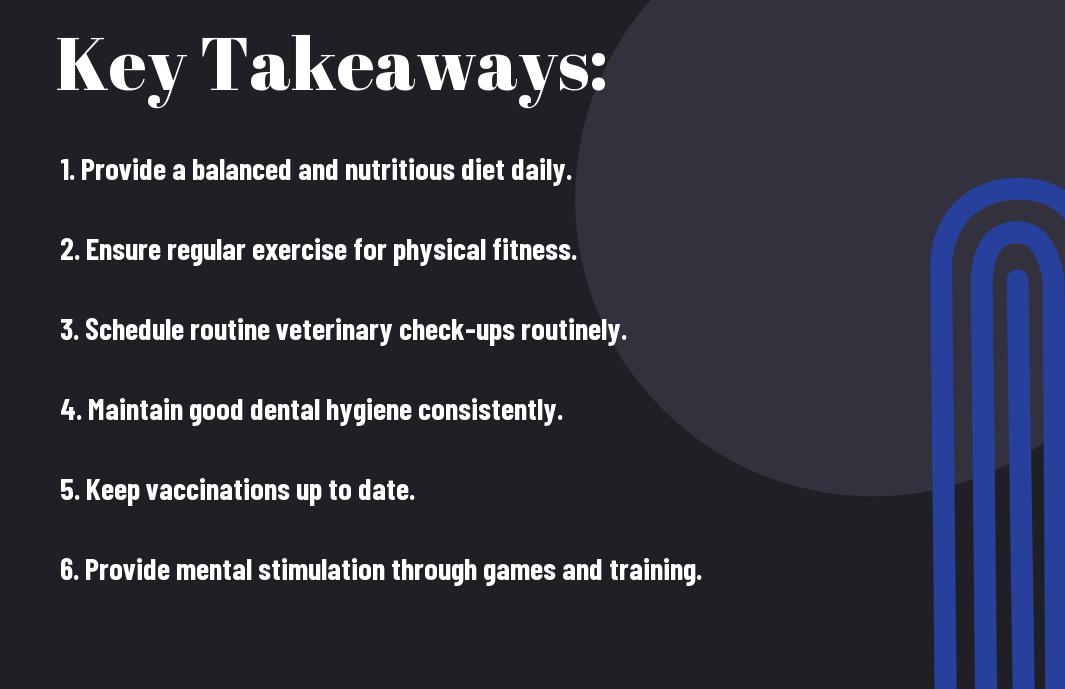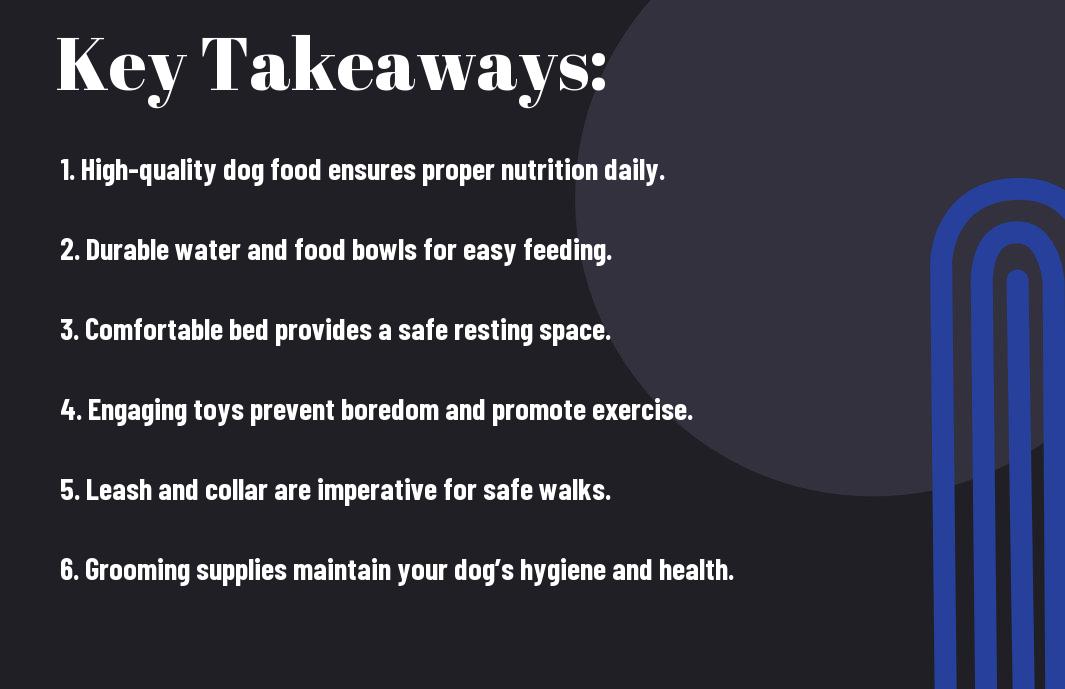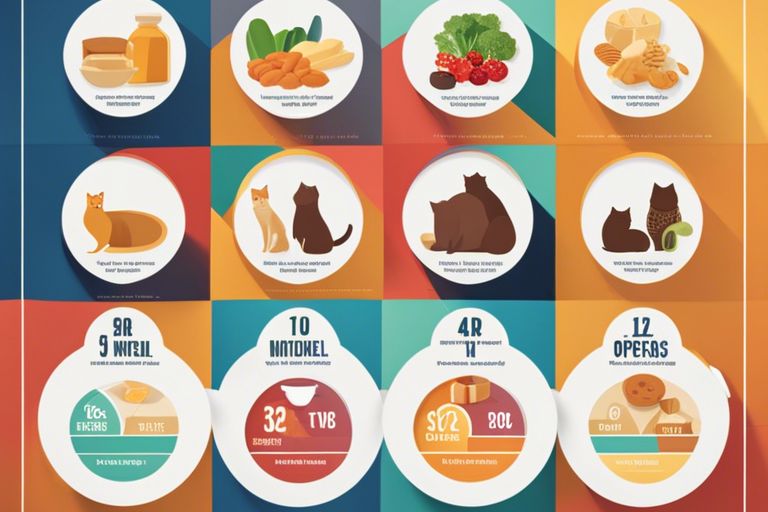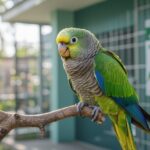Most hamster owners want to provide the best nutrition for their furry friends, but knowing exactly what to feed and what to avoid can be challenging. In this comprehensive guide, we will break down the importants of a hamster’s diet, including safe and healthy foods to offer, as well as items to steer clear of. By following these tips, you can ensure your hamster stays happy, healthy, and well-fed.
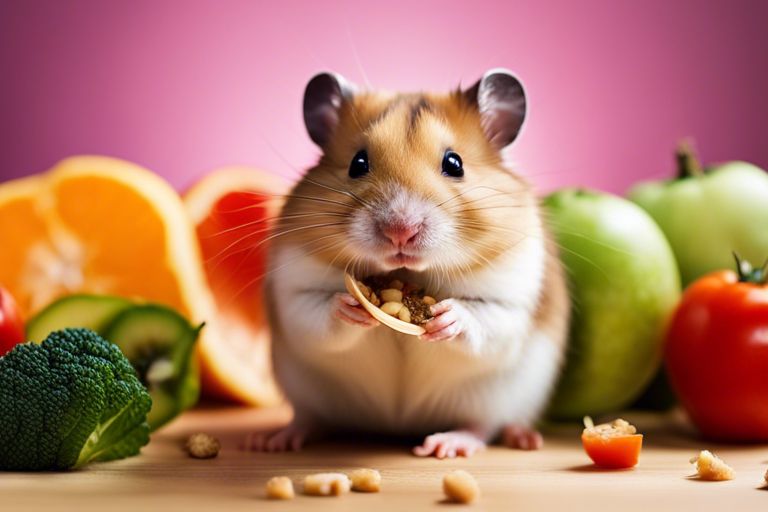
Types of Hamster Diets
A proper diet is important for a hamster’s health and well-being. There are various types of diets that can be suitable for hamsters, but it’s important to choose the best options to meet their nutritional needs. Here are some common types of hamster diets:
| Commercially Available Hamster Foods | Fresh Food Options for a Diverse Diet |
| Seed mixtures | Fruits and vegetables |
| Pellets | Leafy greens |
| Treats | Nuts and seeds |
| Fresh foods | Insects and protein sources |
| Homemade diets | Grains and cereal |
Commercially Available Hamster Foods
An important part of a hamster’s diet is commercially available hamster foods. These foods are specially formulated to provide a balanced diet for your pet. Look for high-quality brands that contain a mix of seeds, grains, and pellets to ensure your hamster receives all the necessary nutrients.
Fresh Food Options for a Diverse Diet
Hamsters also benefit from fresh food options to supplement their diet and provide variety. Including fruits and vegetables, such as carrots, apples, and cucumbers, can offer important vitamins and minerals. Ensure to wash fresh foods thoroughly and remove any uneaten portions to prevent spoilage.
Foods like leafy greens, nuts, seeds, and even insects can be given in moderation to provide additional nutrients and promote natural foraging behaviors in hamsters. These fresh food options can add excitement to your pet’s diet and contribute to their overall health and well-being.
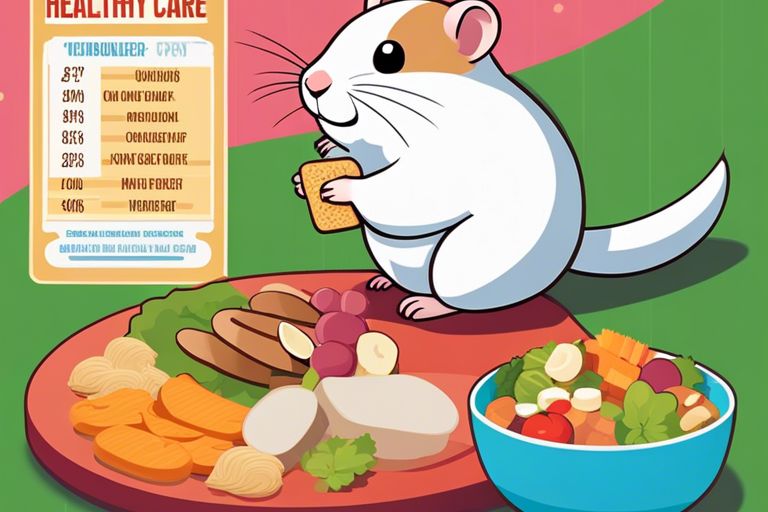
Step-By-Step Guide to Feeding Your Hamster
Any responsible hamster owner knows the importance of providing a balanced diet for their furry friend. In this guide, we will break down what to feed your hamster and what to avoid to ensure their optimal health and well-being.
Setting Up a Feeding Schedule
| What to Do | What to Avoid |
| With a consistent feeding schedule, your hamster will learn when to expect food and develop a routine. | Avoid overfeeding or underfeeding your hamster, as this can lead to health problems. |
Proportioning Food for Optimal Health
| What to Do | What to Avoid |
| If you are feeding a mix of seeds and pellets, make sure to provide a balanced ratio for your hamster’s nutritional needs. | Avoid giving your hamster too many treats, as they can disrupt the balance of their diet. |
A well-proportioned diet is key to keeping your hamster healthy and happy. It is crucial to monitor your hamster’s food intake and adjust as needed to ensure they are getting the right balance of nutrients. By following these guidelines, you can help your hamster live a long and healthy life.
Tips for Choosing the Right Food
To ensure your hamster stays healthy and happy, it’s crucial to select the right food for their diet. Here are some tips to help you make the best choice:
- Look for a high-quality hamster food that is specifically formulated for their nutritional needs.
- Check the ingredient list and opt for a mix that includes a variety of seeds, grains, and pellets.
- Avoid foods with added sugars, artificial colors, and preservatives.
- Consider your hamster’s age and activity level when selecting food to ensure it meets their specific requirements.
Factors to Consider When Selecting Hamster Food
When choosing the right food for your hamster, there are several factors to consider to ensure their diet is balanced and nutritious:
- Consider your hamster’s age, breed, and activity levels when selecting food.
- Check the ingredient list for a good balance of protein, fiber, and fat.
- Ensure the food is fresh and free from any signs of mold or pests.
- Consult with a veterinarian or experienced breeder for recommendations on the best food for your hamster.
The Pros and Cons of Various Food Choices
An imperative aspect of providing the right diet for your hamster is understanding the pros and cons of different food choices. Here is a breakdown of various food options in terms of their benefits and drawbacks:
| Food Choice | Pros and Cons |
| Commercial Hamster Food |
|
| Fresh fruits and vegetables |
|
| Insects and protein sources |
|
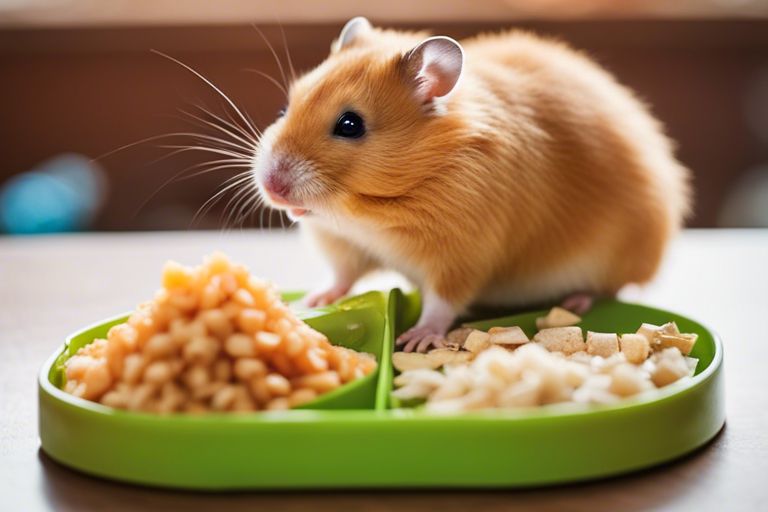
Foods to Avoid
Harmful Substances for Hamsters
With their small size and sensitive digestive systems, hamsters are susceptible to the harmful effects of certain substances. These include caffeine, alcohol, sugary foods, and foods high in salt. It is important to keep these items away from your furry friend to prevent potential health issues.
Common Food Items That Can Cause Health Issues
For hamsters, some common food items that can lead to health problems include citrus fruits, garlic, onions, and certain vegetables like potatoes and rhubarb. These foods can cause digestive issues or even be toxic to your pet. It is crucial to be aware of what you are feeding your hamster to ensure their well-being.
Hamsters have specific dietary needs that must be met to keep them healthy and happy. Knowing which foods to avoid is crucial to prevent any potential health issues for your furry friend. By being mindful of what you feed your hamster, you can ensure they lead a long and thriving life.
Final Words
Conclusively, providing a balanced diet is crucial for your hamster’s health and wellbeing. By following this diet guide and feeding your hamster the right foods while avoiding those that are harmful, you can ensure that your furry friend lives a happy and healthy life. Remember to offer a variety of fresh vegetables, fruits, seeds, grains, and pellets to meet their nutritional needs. Avoid feeding them sugary, fatty, or toxic foods that can lead to health issues. With proper diet and care, your hamster will thrive and bring joy to your life for years to come.
FAQ
Q: What should I feed my hamster?
A: Hamsters should be fed a balanced diet that includes a mix of commercial hamster pellets, fresh fruits and vegetables, and occasional protein sources like mealworms or boiled egg.
Q: How much should I feed my hamster?
A: The amount of food to feed a hamster can vary based on its size and activity level, but a general guideline is around 1-2 tablespoons of pellets per day, along with small amounts of fresh produce.
Q: What foods should I avoid feeding my hamster?
A: Hamsters should not be fed foods high in sugar, salt, or fat, such as chocolate, candy, or processed foods. Also, avoid feeding them foods that are toxic to hamsters, like onions, garlic, and citrus fruits.
Q: Can I give my hamster treats?
A: Yes, you can give your hamster treats, but they should be given in moderation. Healthy treat options include small pieces of fresh fruits or vegetables, whole grain cereal, or commercial hamster treats.
Q: Do hamsters need access to fresh water at all times?
A: Yes, hamsters should have access to fresh, clean water at all times. Make sure to provide a water bottle or dish that is changed daily to ensure your hamster stays hydrated and healthy.
